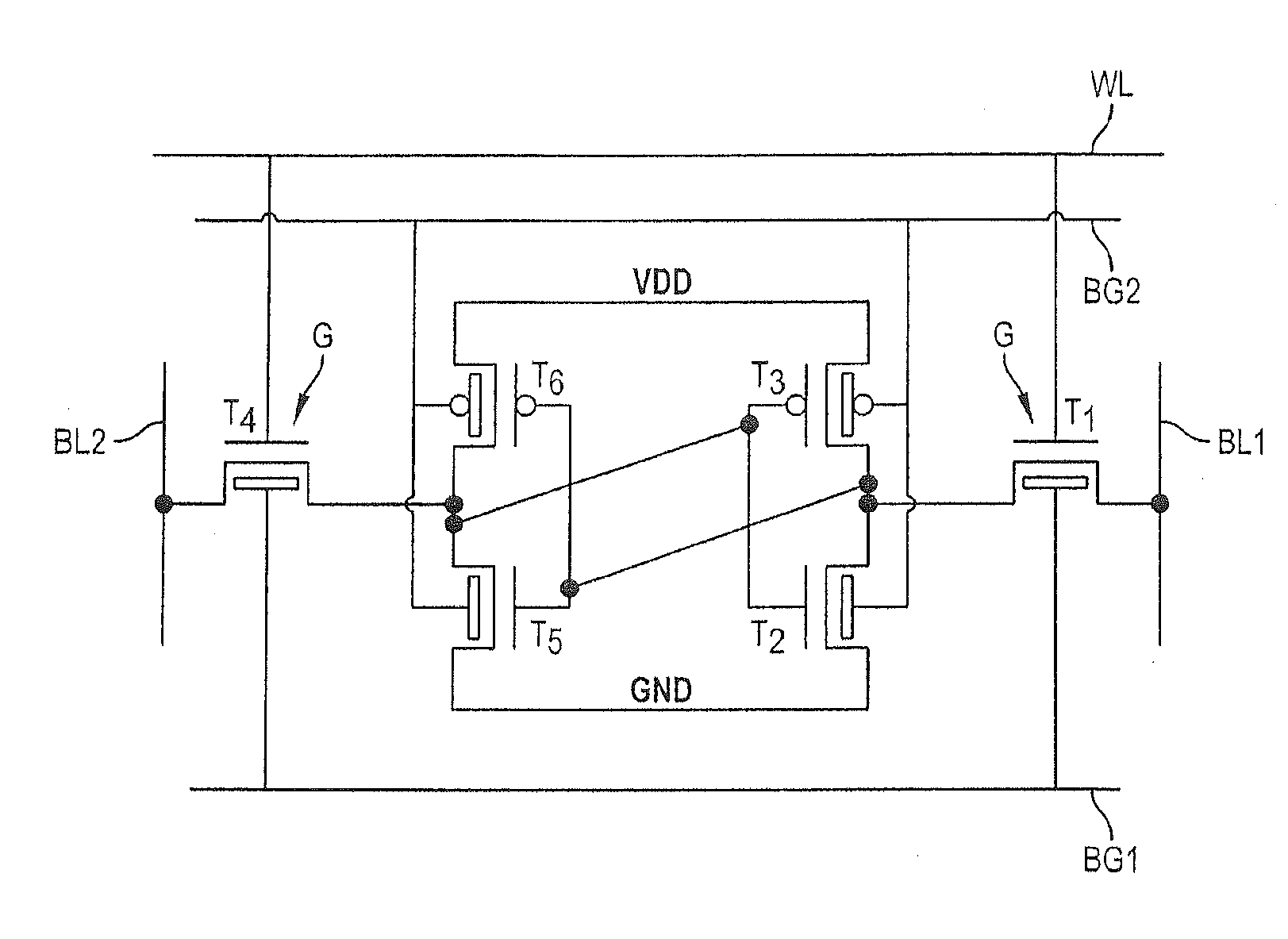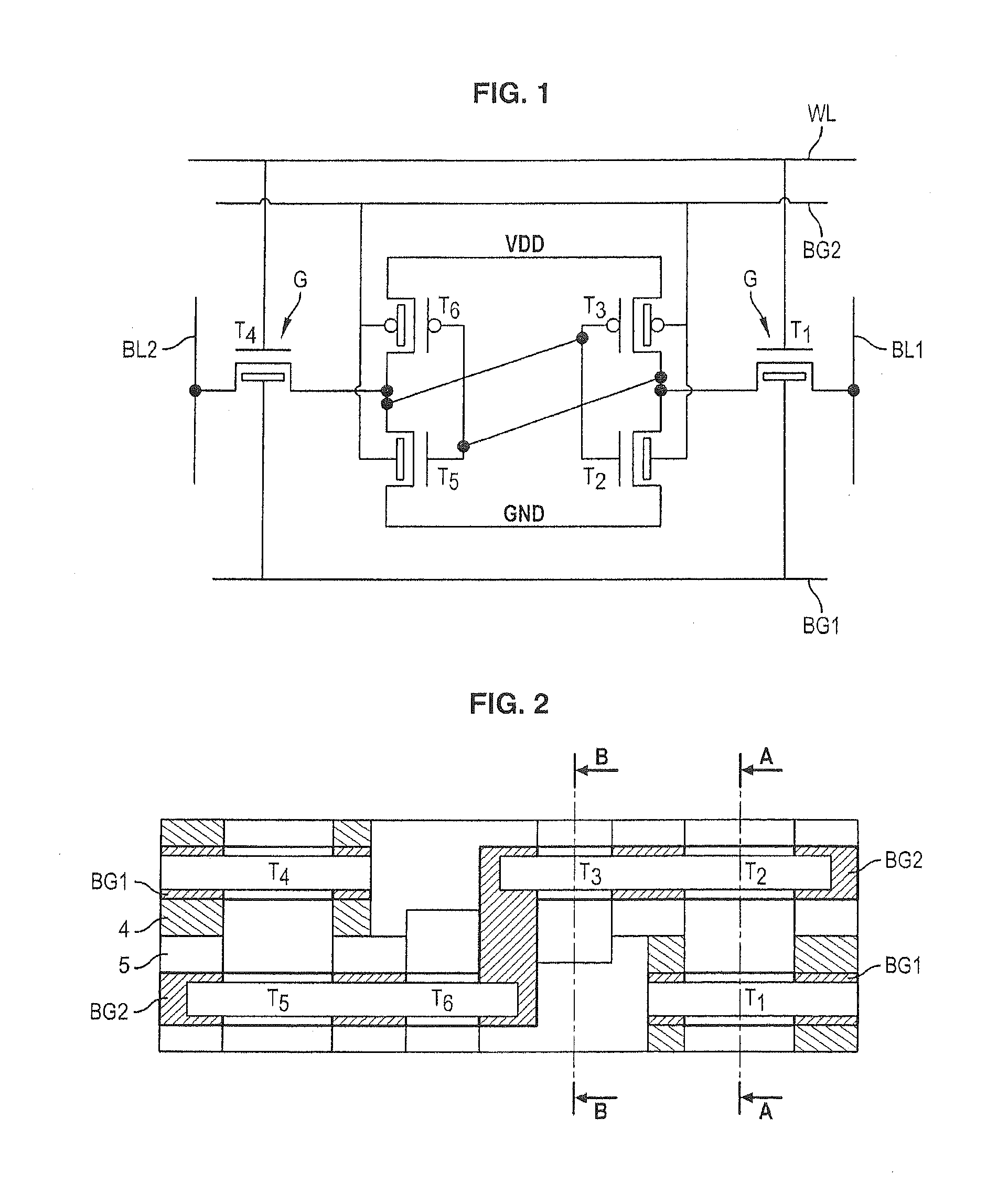SRAM-type memory cell
a memory cell and sram technology, applied in the field of sram-type memory cells, can solve the problems of limiting the margin for improvement of the various functional modes, and the choice of working in the well column does not favour the facilitation of the operating mode,
- Summary
- Abstract
- Description
- Claims
- Application Information
AI Technical Summary
Benefits of technology
Problems solved by technology
Method used
Image
Examples
Embodiment Construction
[0045]Structure of the SRAM Cell
[0046]FIG. 1 shows the circuit diagram corresponding to an SRAM-type memory cell according to the invention.
[0047]The memory cell comprises six transistors T1 to T6.
[0048]Two of these transistors are access transistors T1 and T4.
[0049]The transistors T1 and T4 are produced on a semiconductor on insulator substrate and each of the transistors has a front gate G and a back control gate BG1 that can be controlled to modify the behaviour of the transistor.
[0050]Preferably a back gate line is used to collectively connect the back control gate BG1 of the two access transistors T1, T4 to one and the same potential, which makes it possible to provide easy and inexpensive control, but it is also possible for each of the back gates to be individually connected to a potential.
[0051]The front gate G of each of the access transistors T1 and T4 is linked to a word line WL.
[0052]Moreover, a drain electrode of each of the access transistors T1 and T4 is linked to a b...
PUM
 Login to View More
Login to View More Abstract
Description
Claims
Application Information
 Login to View More
Login to View More - R&D
- Intellectual Property
- Life Sciences
- Materials
- Tech Scout
- Unparalleled Data Quality
- Higher Quality Content
- 60% Fewer Hallucinations
Browse by: Latest US Patents, China's latest patents, Technical Efficacy Thesaurus, Application Domain, Technology Topic, Popular Technical Reports.
© 2025 PatSnap. All rights reserved.Legal|Privacy policy|Modern Slavery Act Transparency Statement|Sitemap|About US| Contact US: help@patsnap.com



